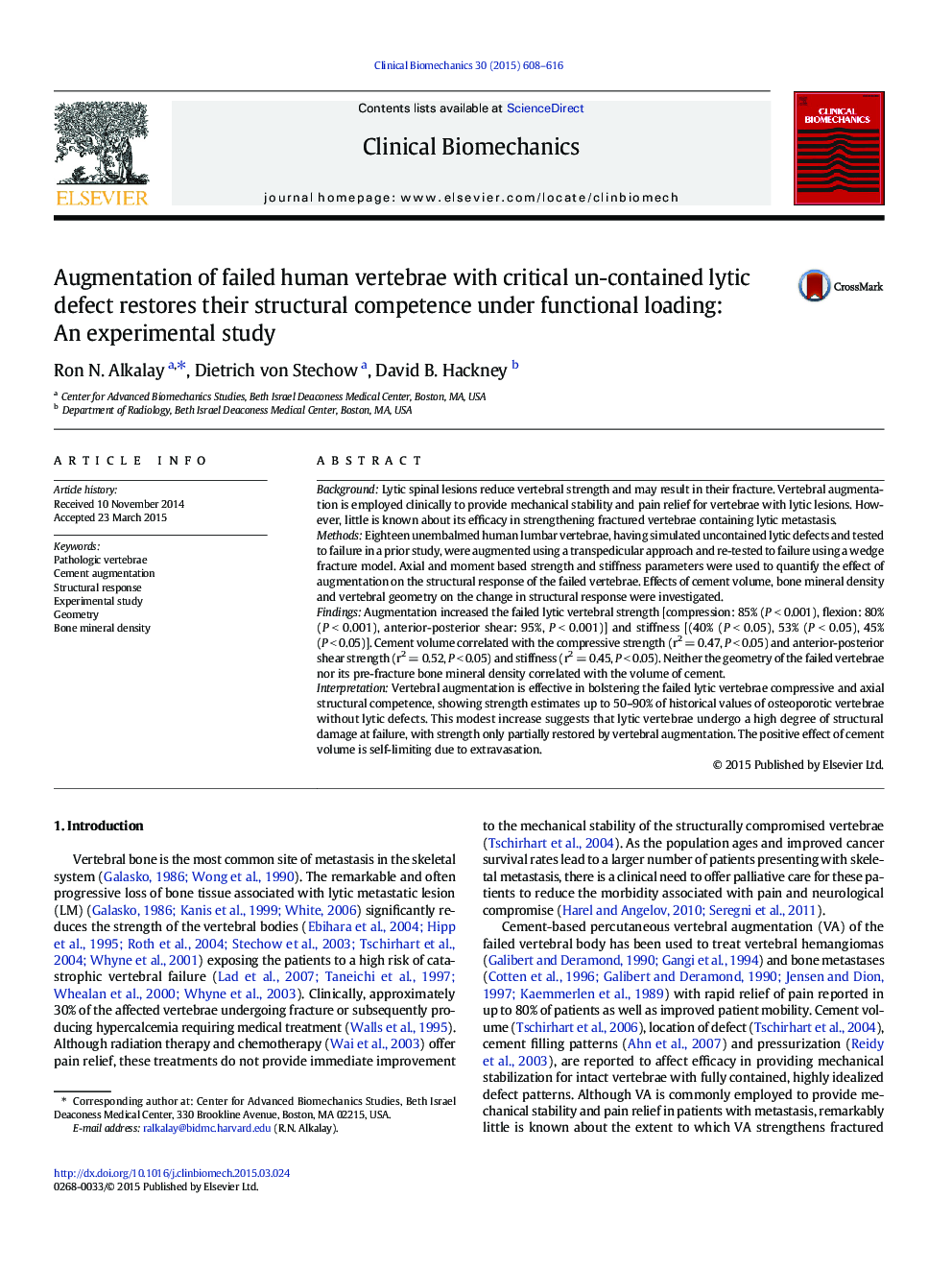| Article ID | Journal | Published Year | Pages | File Type |
|---|---|---|---|---|
| 4050245 | Clinical Biomechanics | 2015 | 9 Pages |
•Failed human vertebrae with lytic defects were cement augmented and tested to failure.•Resulted change in the vertebral structural competence and geometry was assessed.•Augmentation bolstered the vertebral compression and shear structural competence.•However, treated bodies remained 20–100% weaker compared to historical controls.•Change in vertebral geometry was not correlated with increased cement volume.
BackgroundLytic spinal lesions reduce vertebral strength and may result in their fracture. Vertebral augmentation is employed clinically to provide mechanical stability and pain relief for vertebrae with lytic lesions. However, little is known about its efficacy in strengthening fractured vertebrae containing lytic metastasis.MethodsEighteen unembalmed human lumbar vertebrae, having simulated uncontained lytic defects and tested to failure in a prior study, were augmented using a transpedicular approach and re-tested to failure using a wedge fracture model. Axial and moment based strength and stiffness parameters were used to quantify the effect of augmentation on the structural response of the failed vertebrae. Effects of cement volume, bone mineral density and vertebral geometry on the change in structural response were investigated.FindingsAugmentation increased the failed lytic vertebral strength [compression: 85% (P < 0.001), flexion: 80% (P < 0.001), anterior-posterior shear: 95%, P < 0.001)] and stiffness [(40% (P < 0.05), 53% (P < 0.05), 45% (P < 0.05)]. Cement volume correlated with the compressive strength (r2 = 0.47, P < 0.05) and anterior-posterior shear strength (r2 = 0.52, P < 0.05) and stiffness (r2 = 0.45, P < 0.05). Neither the geometry of the failed vertebrae nor its pre-fracture bone mineral density correlated with the volume of cement.InterpretationVertebral augmentation is effective in bolstering the failed lytic vertebrae compressive and axial structural competence, showing strength estimates up to 50–90% of historical values of osteoporotic vertebrae without lytic defects. This modest increase suggests that lytic vertebrae undergo a high degree of structural damage at failure, with strength only partially restored by vertebral augmentation. The positive effect of cement volume is self-limiting due to extravasation.
